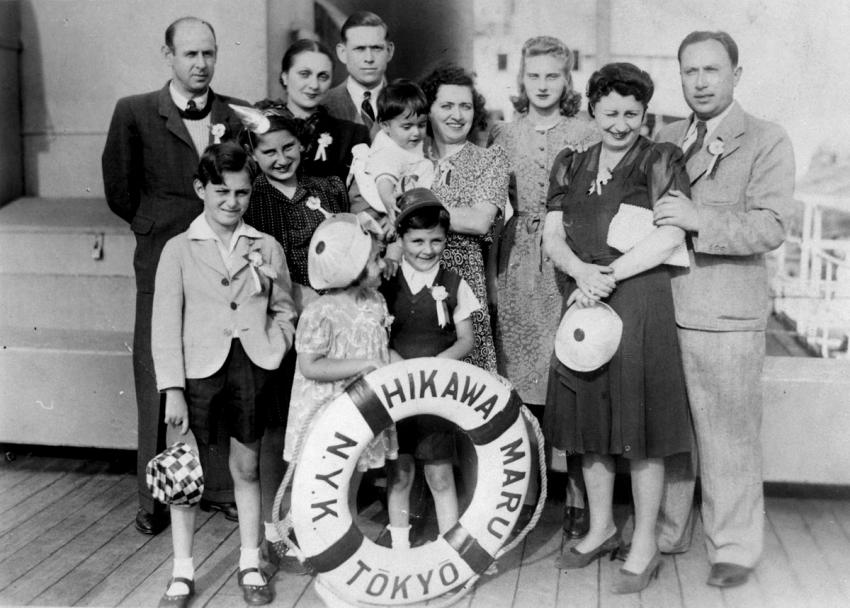The Japanese ship "Hikawa Maru" set sail from Yokohoma, Japan, on 5 June 1941, for Canada. On board were Jewish refugees escaping the Nazis, including the family of Zerah Warhaftig, later Knesset member and Israel Prize laureate. In the center of the photograph is Zerah's wife Naomi Warhaftig, holding her son Emanuel in her arms.
The "Hikawa Maru" was built in the late 1920s for the Nippon Yusen KK shipping company, and was known as the "Queen of the Pacific". The Hikawa Maru was one of three ships built to the same specifications; the other two ships were sunk in battles during World War II.
The "Hikawa Maru" and her sister ships sailed several times from Yokohoma, Japan to Vancouver, Canada and Seattle, USA. Dozens of Jewish refugees who fled Kovno just before the Nazi occupation, sailed on the "Hikawa Maru" on their way to North America. The refugees' escape from Kovno and arrival in Japan was made possible thanks to the permits they received from the Japanese Consul in Kovno, Chiune Sempo Sugihara, and the Dutch diplomatic representative in Kovno Jan Zwartendijk.
On 5 June 1941, the "Hikawa Maru" set sail from Yokohoma, for Vancouver. One of its passengers, Zerah Warhaftig, wrote:
"Travelling from Japan to the USA in June 1941, when we crossed the longitudinal line […] I observed the Sabbath for two consecutive days. At home, we have a memento: a photograph of the ship's passengers, including my wife Naomi holding our baby boy Emanuel. I am not in the photo, because it was taken on my second Sabbath, and I therefore refused to be photographed." (Warhaftig, Refugee and Survivor during the Holocaust, p. 175)
They docked in Vancouver on 17 June 1941. Warhaftig, his wife and son reached the USA, where they lived for six years, during which time they had three more children. In late 1947, they immigrated to Eretz Israel (Mandatory Palestine). Over the years, Zerah became a Member of Knesset, a Deputy Minister, one of the leaders of the Hapoel Mizrahi and Mafdal parties, and in 1983 he was awarded the Israel Prize for his contribution to the State and society in advancing Hebrew Law.
Some 4,600 Jewish refugees passed through Japan from July 1940 until the German invasion of the Soviet Union in June 1941, having obtained visas to other countries or the opportunity to move to other destinations, including Shanghai and the Curacao Caribbean Islands. About half of the refugees were from Germany, and the other half from Lithuania.
Yad Vashem Photo Archives 4613/1056

